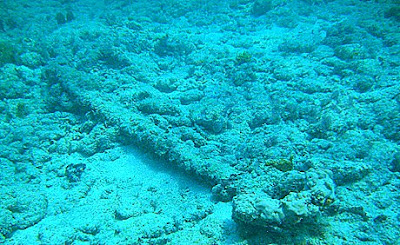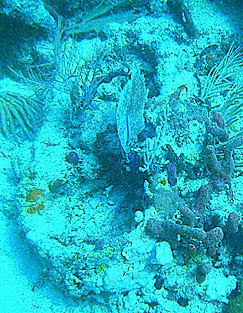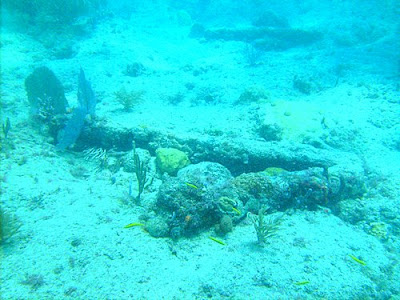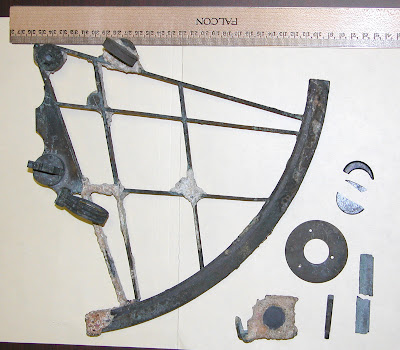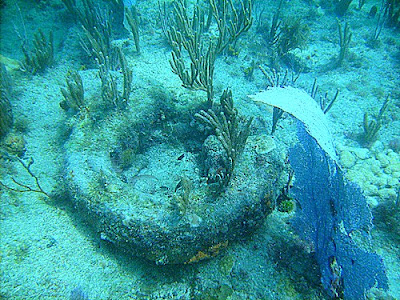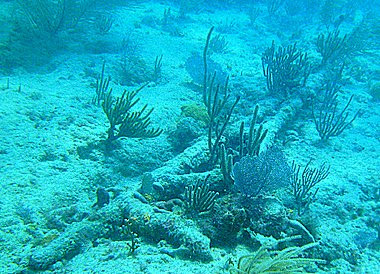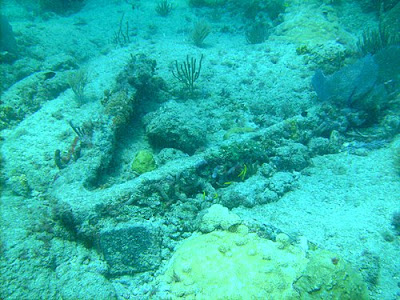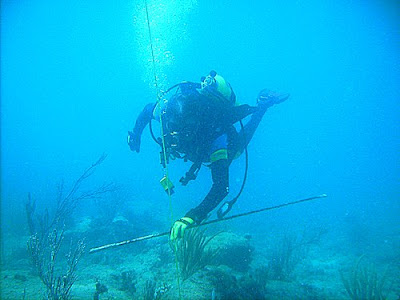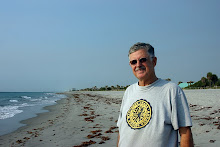There were also some lead artifacts recovered from the cultural deposit in 1956/7. There are a few featured here:
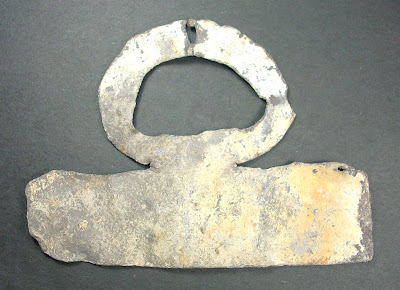
This soft lead item is about 5 & 1/2 inch (14cm) long and weighs about 5 & 1/2 oz (156.5 grams). It looks as if it is
some one's makeshift hanger. What do you think it is?

This hard lead item has an outside diameter of 3 & 1/8 inch (8cm). The center has a 3/8 inch (1cm) hole through it. The thickness near the center is 3/8 inch (1cm). The item is shown with its rounded side towards the camera. The other side is flat. The object weighs about 1 pound (0.45
kg). It has been
suggested that this is a water pump flapper weight. What do you think?

This item represents a supply of lead sheeting used for various purposes aboard ship. This piece was found as shown, folded several times. As folded the item is 4 & 1/2 inch (11.5cm) long; and 1 & 1/2 inch (3.8cm) high. Its weight approx 1 pound (0.450
kg).

At some point in time we unfolded the previous item to see if there was anything inside. There was nothing within. It has now been refolded as it was originally.
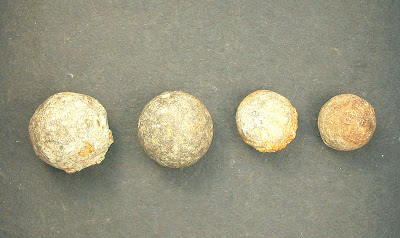
Bear with me as I digress a little with a human interest story. These lead musket balls are part of the artifact collection, but they were found in the Florida Keys by Art McKee prior to the summer of 1956. They possibly were found on the wreck
Capitana el rui, or any one of the other wrecks of the Spanish treasure fleet of 1733, or the wreck of the HMS Winchester that sank in 1695 near
Carysfort Reef. In other words, I do not know, but if I had to guess, I would say they came from the Winchester. It was a 145 foot British-Man-of-War, and certainly had a great amount of armament, including musket balls. But so did the Spanish, I'm sure. They range in weight from 1.67 oz (47.3g) to 0.66 oz (18.6g).
It happened that the cultural deposit that we had discovered was so encrusted that we could not take it apart with the tools at hand. We decided to seek the advice of Art McKee, a treasure hunter and
salvager based in the Florida Keys. We called him and introduced ourselves. We told him about the discovery and the problem we were having getting the debris to come apart. We asked about the use of
dynamite, and Art discouraged its use saying that it would do too much damage. He invited us to down to visit with him to see what he had been doing. Shortly, we made the the trip to the Keys.
We arrived at
McKEE's MUSEUM OF SUNKEN TREASURE, which was built to look like a castle. I can remember a gigantic
stocked anchor, missing the wood stock, on display that must have been at least 17 feet tall within view of the overseas highway.
Art gave us an extensive tour, going into much detail. He showed us the treasure housed inside,including the items in a large safe.
Also, I remember the open yard behind the castle. Back there Art had assembled an actual ballast stone mound, shipwreck timbers, cannons and anchors to resemble a shipwreck, but in air, not water.
(I can feel the marine archaeologists cringing).We finished the visit with an exchange of gifts. We gave Art three of our milled silver coins and Art gave us the four musket balls pictured above. And that was how we acquired the musket balls.
Internet information: "One of the pioneer treasure hunters. Indeed, he is called the 'The father of Modern Treasure Hunting.' Using a diving helmet, he excavated his first wreck in 1938." (Art McKee 1910 - 1979).
P.S. As far as getting any tips on tackling our cultural deposit, we came away from our visit with Art McKee with very little. At least we were advised not to use dynamite.
We had had some limited results using a crow bar. We thought that perhaps a larger crow bar might help. We went to the local junk yard to browse around. Sure enough, there it was, a 6 foot, 30 pound,
hexagonal jack hammer rod which we snapped up immediately. Using a new hacksaw blade we cut a
chisel point at the working end of the rod. That did the trick. The added leverage allowed us to work away the entire deposit down to the original reef surface.
Click on a picture above to view entire lead artifact inventory.
Use your back button to return to this site.


